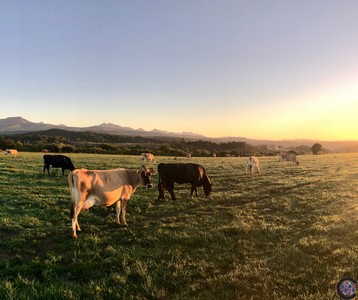This article was featured in our 2019 Fall Special and is written by John Champagne, DVM, MPVM, Ruminant Technical Services Manager, Merck Animal Health
 Preventing a problem before it starts is a sure way to keep your dairy performing at an optimal level. This rings true during the dry period, when cows are at greater risk of developing new mastitis infections. The dry period, with the right dry-off program, can mitigate challenges to udder health. It is a time when secretory cells can be repaired and new ones built so that a cow’s full milk production can be obtained from a healthy gland.
Preventing a problem before it starts is a sure way to keep your dairy performing at an optimal level. This rings true during the dry period, when cows are at greater risk of developing new mastitis infections. The dry period, with the right dry-off program, can mitigate challenges to udder health. It is a time when secretory cells can be repaired and new ones built so that a cow’s full milk production can be obtained from a healthy gland.
The goal of a dry-off program is to treat subclinical infections, reduce the risk of new infection and decrease the need for treatments during the next lactation. A prevention plan that includes dry cow protocols can also help prevent the spread of infection to other animals.
KEEP COWS CLEAN AND DRY
Make the management of dry cows and springing heifers a priority. Effective management and maintenance of dry cow pens are driven by animal need. Providing a clean environment for cows during the dry period can curtail new udder infections. Additionally, providing well-maintained calving or maternity areas is essential. Bacteria need a food source, such as manure, along with a moist, warm environment to thrive. This can be especially problematic during the heat of the summer, so it’s important to keep stalls clean and dry to diminish bacteria growth.Demand for space (animal stocking density) can be variable based on the effects of herd reproductive efficiency and the effects of seasonality on reproduction. Heat stress mitigation is a priority due to the potential negative effects on the cow and her calf. Provision for bedding management to maintain comfort and minimize pathogen exposure is a must.
MAINTAIN IDEAL BODY CONDITION
Cows are most likely to become over conditioned during the last three to four months of lactation, when milk production has decreased and caloric levels have not been reduced accordingly. Assigning a condition score when cows enter dry off allows your dairy to formulate a diet so she maintains a desirable body condition score (BCS) of 3.50 during dry off with a goal to minimize loss or gain of greater than 0.25 BCS during this time. Work with your veterinarian to assess cows’ BCS at dry off, identify gaps or weakness and build a protocol to monitor and assess the protocol outcomes.
AN OUNCE OF PREVENTION
Mastitis is the most common reason antibiotics are administered on the dairy farm. Prevention is the best way to reduce the risk of antibiotic residue and to help you maximize milk quality on your farm. At the last milking of lactation, use a product like Orbenin®-DC to treat existing intramammary infections. By treating contagious, mastitis-causing bacteria like Staphylococcus aureus and Streptococcus agalactiae, Orbenin-DC helps put fresh cows into the milking string faster.
Vaccinating during the dry cow period is another step you can take to protect cows from mastitis. Coliform mastitis vaccines, such as Bovilis® J-5, can help a cow mount an immune response to E. coli, a gram-negative bacteria. Vaccination should be administered at dry-off to prime the immune system. Three doses of Bovilis J-5 are recommended at four- to six-week intervals (Note: do not vaccinate within two weeks prior to calving).
Being proactive by developing a prevention protocol can stop issues before they impact productivity on the dairy. It’s important to talk with your veterinarian to determine a protocol during dry off that is right for your operation.
